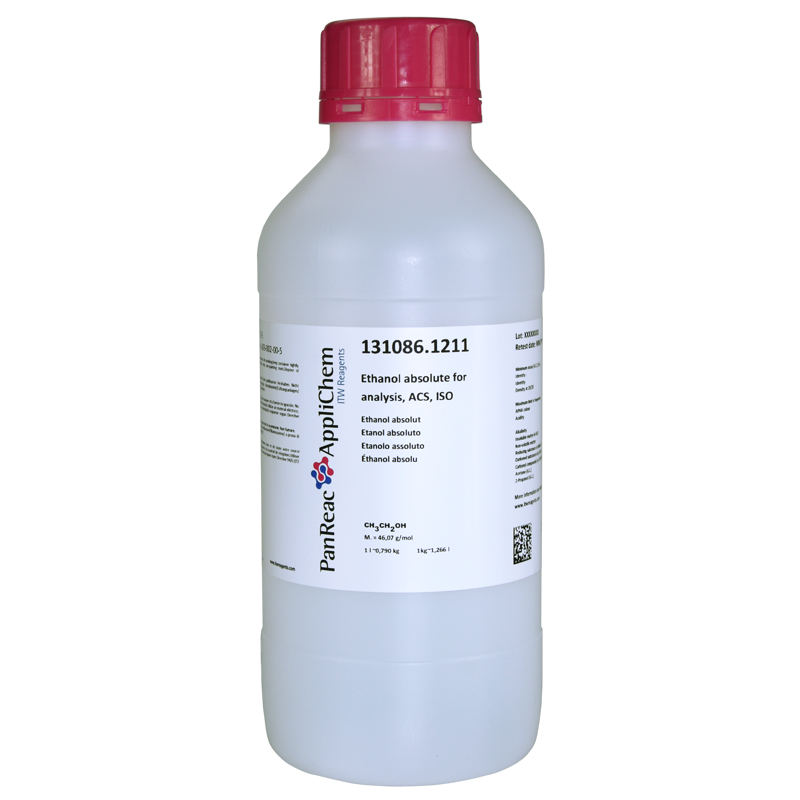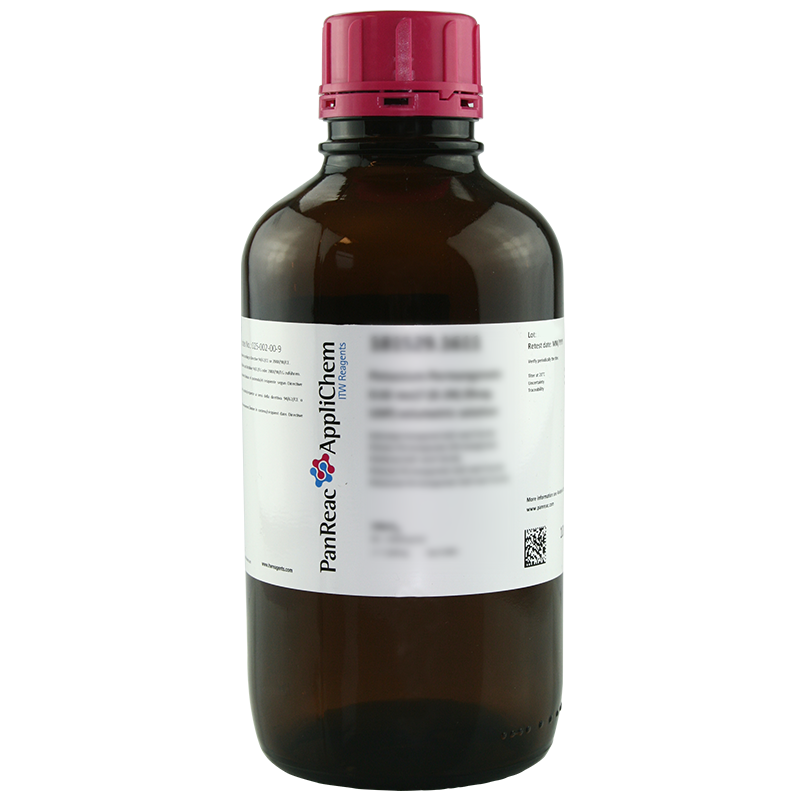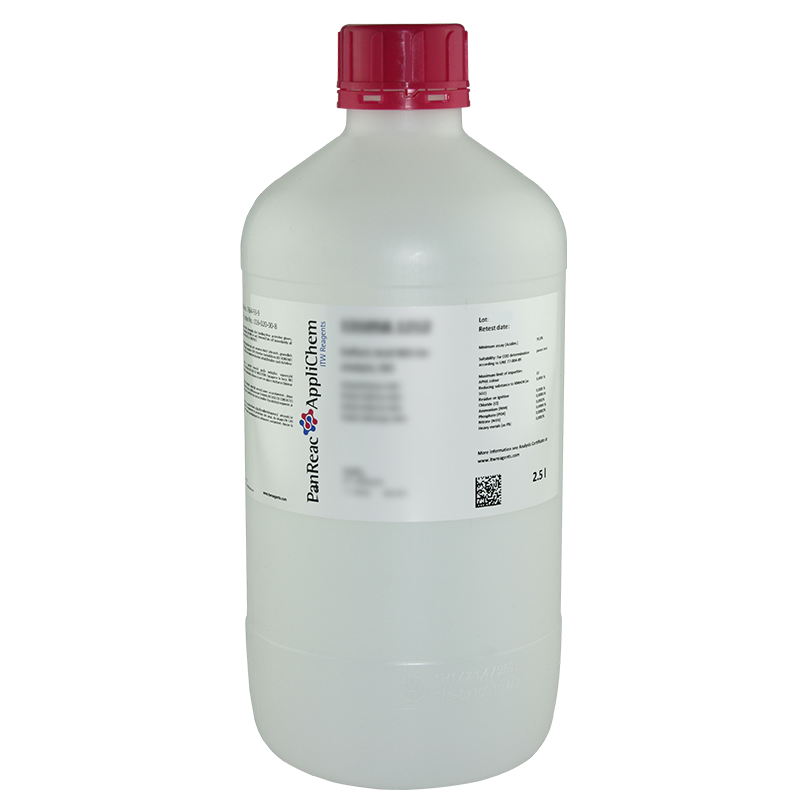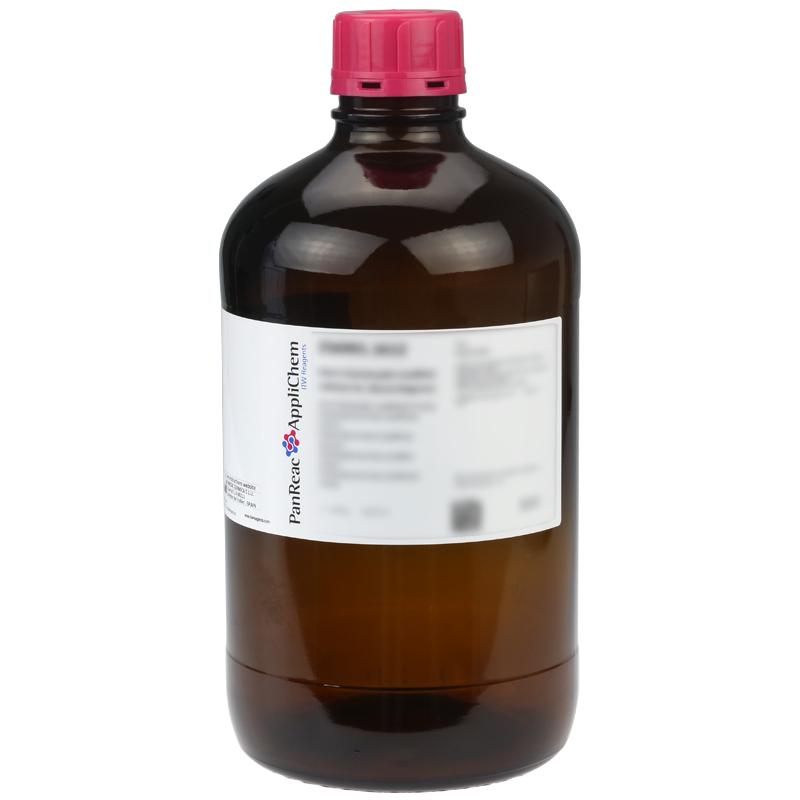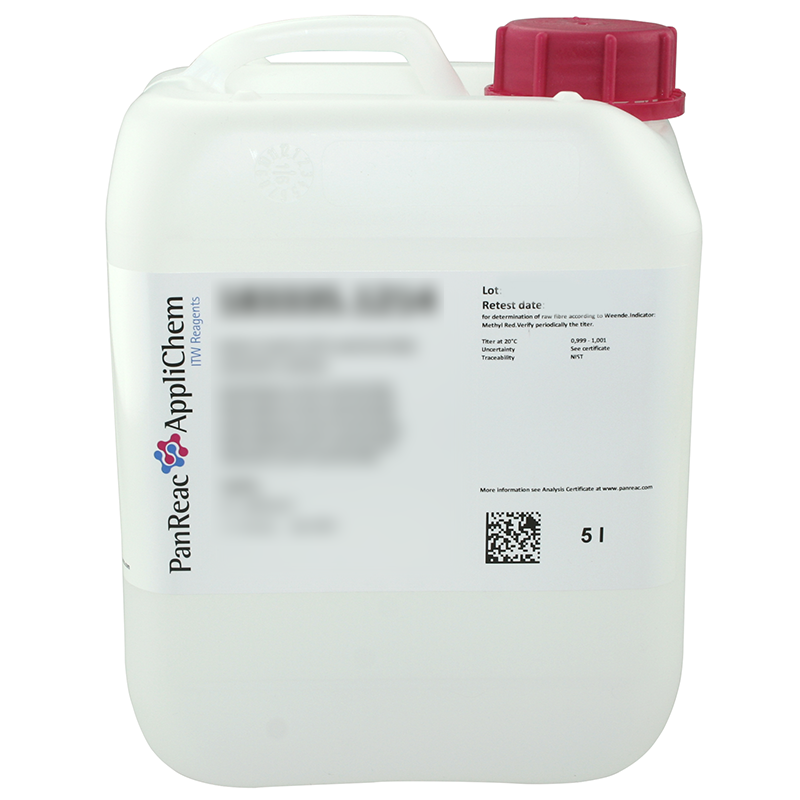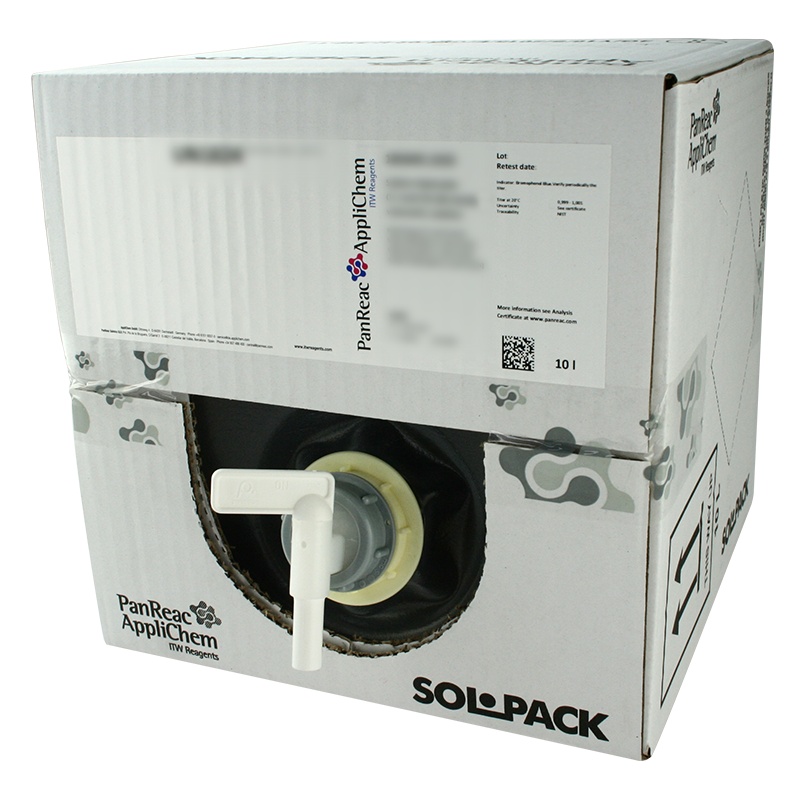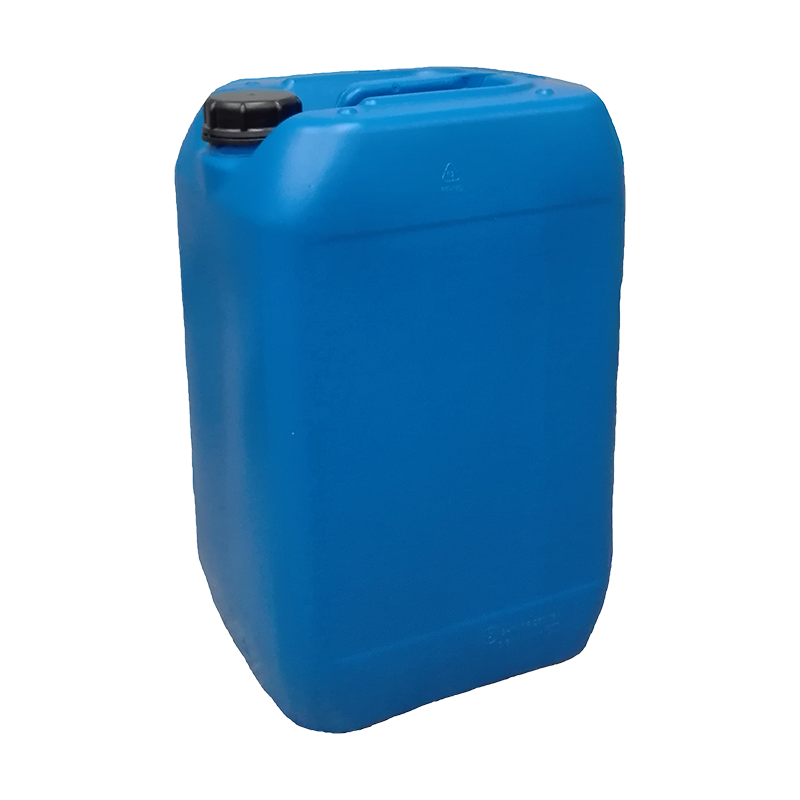Packs sizes (8)
| code | packaging size | price per unit | box price per unit | |
|---|---|---|---|---|
| Code & packaging | Price per piece | |||

|
code
131086.1211
|
packaging size
1000 ml
|
price per unit
single
$54,15
|
box price per unit
$46,03x 6 units
|

|
code
131086.1611
|
packaging size
1000 ml
|
price per unit
single
$55,65
|
box price per unit
$47,30x 6 units
|

|
code
131086.1212
|
packaging size
2.5 l
|
price per unit
single
$112,95
|
box price per unit
$96,01x 4 units
|

|
code
131086.1612
|
packaging size
2.5 l
|
price per unit
single
$115,35
|
box price per unit
$98,05x 4 units
|

|
code
131086.1214
|
packaging size
5 l
|
price per unit
single
$191,70
|
box price per unit
$162,95x 4 units
|

|
code
131086.1315
|
packaging size
10 l
|
price per unit
single
$340,50
|
box price per unit
|

|
code
131086.0716
|
packaging size
25 l
|
price per unit
single
$733,35
|
box price per unit
|

|
code
131086.0537
|
packaging size
30 l
|
price per unit
single
Request a quote
|
box price per unit
|

Technical data
- Melting Point:
- -114.1 °C
- Boiling Point:
- 78.5 °C
- Density:
- 0.790 kg/l
- Refractive Index:
- 20/D 1.361
- Physical Description:
- liquid
- Product Code:
- 131086
- Product Name:
- Ethanol absolute (Reag. USP, Ph. Eur.) for analysis, ACS, ISO
- Quality Name:
- for analysis, ACS, ISO
- Specifications:
- Minimum assay (G.C.) (v/v): 99.8%
Specific Gravity 15,56°C: < 0.7962
Identity: IR passes test
according to Pharmacopoeias:: passes test
Density 20/20: 0.790-0.793
Maximum limit of impurities
APHA colour: 10
Appearance: passes test
Appearance Clarity of solution: passes test
Acidity: 0.00035 meq/g
Alkalinity: 0.0002 meq/g
Insoluble matter in H2O: passes test
Non-volatile matter: 0.0005 %
Reducing substance to KMnO4: passes test
Darkened substances by H2SO4: passes test
Carbonyl compounds (as CH3CHO): 0.005%
Fusel oil: passes test
Absorbance: passes test
Residual solvents (Ph.Eur/USP): passes test
Acetone (G.C.): 0.001%
2-Butanol (G.C.): 0.02%
2-Propanol (G.C.): 0.003%
Higher Alcohols (G.C.): 0.01%
Butanone (G.C.): 0.003%
3-Methyl-1-Butanol (G.C.): 0.05%
Volatile impurities (G.C.):
Methanol: 0.02 %
Acetaldehyde and acetal: 0.001 %
Benzene: 0.0002 %
Total other impurities: 0.03 %
Water (H2O): 0.2 %
Residual metals ICP: (according to EMEA/CHMP/SWP/4446/2000)
Class 1A (Pt, Pd): 10 ppm
Class 1B (Ir, Rh, Ru, Os): 10 ppm
Class 1C (Mo, Ni, Cr, V): 25 ppm
Class 2 (Cu, Mn): 250 ppm
Class 3 (Fe, Zn): 1,300 ppm
Metals by ICP [in mg/Kg (ppm)]
Ag: 0.05
Al: 0.5
As: 0.05
Au: 0.05
B: 0.02
Ba: 0.1
Be: 0.02
Bi: 0.05
Ca: 0.5
Cd: 0.05
Co: 0.02
Cr: 0.02
Cu: 0.1
Fe: 0.1
Ga: 0.02
Ge: 0.05
Hg: 0.05
In: 0.05
K: 0.1
Li: 0.05
Mg: 0.1
Mn: 0.02
Mo: 0.02
Na: 0.5
Ni: 0.02
P: 0.2
Pb: 0.1
Pt: 0.02
S: 0.2
Sb: 0.02
Si: 0.2
Sn: 0.1
Sr: 0.2
Ti: 0.02
Tl: 0.02
V: 0.02
Zn: 0.1
Zr: 0.02
- Hazard pictograms
-
- UN:
- 1170
- Class/PG:
- 3/II
- ADR:
- 3/II
- IMDG:
- 3/II
- IATA:
- 3/II
- Storage:
- Storage away from direct light.
- Signal Word:
- Danger
- GHS Symbols:
- GHS02
GHS07
- H Phrases:
- H225
H319
- P Phrases:
- P210
P233
P240
P241
P242
P501
P243
P280
P303+P361+P353
P370+P378
P403+P235
P264
P305+P351+P338
P337+P313
- Master Name:
- Ethanol absolute
- Synonyms Long Text:
- Ethyl Alcohol
- EINECS:
- 200-578-6
- CS:
- 22071000
- Index Nr.:
- 603-002-00-5
Documents
Inquiry
Comments
OccurrenceEthanol is a naturally occurring product of alcoholic fermentation in ripe fruits and juices. However, ethanol also occurs naturally in all other parts of plants, such as the roots, rhizomes and tubers of medicinal angelica (Angelica archangelica), carrots (Daucus carota), Rheum palmatum and onions (Allium cepa), the flowers of Telosma cordata, the shoots of beanwort (Satureja cuneifolia), ginseng (Panax ginseng), and sea grape (Ephedra sinica), and the resins and saps of amber trees (Liquidambar styraciflua and Liquidambar orientalis) and rosemary (Rosmarinus officinalis). Many foods naturally contain small amounts of ethanol. Even non-alcoholic beer still contains up to 0.5 percent ethanol by volume. According to the German Food Code, fruit juices may have an ethanol content of about 0.38 percent by volume. Apple juice, for example, contains up to 0.016 and grape juice up to 0.059 percent ethanol by volume. A ripe banana can contain up to 1 percent by volume, bread up to 0.3 percent by volume. Ripe kefir can contain up to 1 percent ethanol by volume, sauerkraut up to 0.5 percent. The physiological ethanol content of human blood is about 0.02 to 0.03 per mille. Ethanol has been detected in interstellar molecular clouds along with other organic molecules such as acetaldehyde. The formation mechanism of the organic molecules is unclear.
Production
Ethanol is produced by fermentation from biomass, usually from crops containing sugar or starch, or traditionally from horticultural products. This process is carried out in a controlled manner using a range of foodstuffs, producing wine from grapes or beer from malt and hops, for example. Wood sugar can be fermented into sulfite spirit as a byproduct of the sulfite process. However, this can only be used for energy purposes due to numerous impurities. Before the actual fermentation, starch is usually first split into disaccharides, whose glycosidic bond is broken by hydrolases; the resulting monosaccharides are then fermented by yeast or bacteria. At an ethanol concentration close to 15%, yeast cells and bacteria begin to die, so no higher concentration can be achieved by fermentation. The gross equation of alcoholic fermentation is:
C6H12O6 ⟶ 2 C2H5OH + 2 CO2
Distillation
Ethanol can be concentrated by distillation for technical and consumption purposes, as it already evaporates at 78 °C.
Potable alcohol
Potable alcohol suitable for consumption is obtained by distillation of an alcoholic mash from agricultural raw materials. Depending on the distillation process, the distillate, known as brandy, contains not only ethanol but also aromas, fusel oils, other organic compounds and water, which determine the character and taste of the end product, such as brandy, whiskey or rum. For the production of vodka, on the other hand, almost pure ethanol is used and only diluted with water. Undiluted, pure ethanol with the sales designation ethyl alcohol of agricultural origin serves as the starting product for other alcoholic beverages, for example, for most liqueurs. Alcoholic beverages containing distilled ethanol are called spirits (colloquially also brandy or schnapps) - in contrast to wine and beer, whose ethanol is produced exclusively by alcoholic fermentation.
Technical purposes
On a large scale, pure ethanol for technical applications is produced by azeotropic rectification (entrainer rectification). The plant consists of two rectification columns. In the main separation column, the ethanol-water mixture is rectified to near the azeotropic point. The bottom product here is water. The auxiliary cyclohexane is added to the overhead product, which consists of 95.6% ethanol and 4.4% water. Formerly common entraining agents such as benzene (Young process) or trichloroethene (Drawinol process) are no longer used today. This three-substance mixture of ethanol, water and entrainer enters the auxiliary separation column. There it is separated into the pure alcohol produced in the sump and a cyclohexane-water mixture as the overhead product. Cyclohexane and water are immiscible in the liquid state and separate in a separator (decanter) after condensation. The auxiliary cyclohexane is added back to the inflowing, azeotropic ethanol-water mixture at the inlet of the auxiliary separation column. It runs in the circuit in the upper section of the auxiliary separation column and is therefore referred to as the "head-running auxiliary". Anhydrous ethanol is obtained on a laboratory scale by distillation over dehydrating chemicals such as calcium oxide, anhydrous calcium sulfate, or molecular sieves. The process of producing absolute alcohol is called absolutization.
Technical syntheses
Ethanol is produced by chemical synthesis from water and ethene in the so-called indirect process homogeneously catalytic with the addition of sulfuric acid. Alcohol produced in this way is also known as industrial alcohol. The process is carried out in two steps with the formation of sulfuric acid esters, which must be hydrolyzed in a second step. After hydrolysis, the sulfuric acid must be concentrated again. In the direct process, phosphoric acid applied to silica serves as a heterogeneous catalyst. At temperatures up to 300 °C and pressures of 70 bar, ethanol is produced directly from ethene and water in the gas phase. However, the conversion per reactor pass is only 5% based on ethene. Because of the wastewater problem and corrosion problems caused by the sulfuric acid produced in the indirect process, ethanol is nowadays produced industrially by phosphoric acid catalysis. The gross equation for both processes is:
C2H4 + H2O → C2H5OH
In principle, ethanol can be obtained by catalytic hydrogenation of acetaldehyde. At high hydrogen pressures, acetaldehyde is thereby converted at nickel-containing contacts:
CH3CHO + H2 → C2H5OH
Furthermore, ethanol is produced in the Synol process by reaction of carbon monoxide with hydrogen and can be separated from the other alcohols produced by distillation.
Detection / analysis of ethanol
Ethanol can be detected by esterification as p-nitrobenzoic acid ester or 3,5-dinitrobenzoic acid ester. The reaction is carried out by reaction with the corresponding acid chloride. Nonspecifically, ethanol can be detected by the iodoform assay. By chromatographic methods such as gas chromatography (GC), ethanol can be quantitatively determined. Wet chemical quantitative detection is possible by oxidation with an excess of potassium dichromate, and the unreacted potassium dichromate can be determined iodometrically. In food analysis, the difference in density between water and ethanol is exploited. The ethanol content is separated in a (steam) distillation and determined pycnometrically. Alternatively, the density can also be measured in a flexural oscillator. In both methods, evaluation is based on tabulated values. In the proton resonance (H NMR) spectrum, ethanol exhibits a triplet structure at room temperature due to coupling of the protons of the hydroxyl group with the methylene protons. This indicates a fixation of the hydroxyl group with respect to the methylene protons. With increasing temperatures, the splitting becomes smaller and eventually disappears completely due to the increasing rotation of the hydroxyl group. Nuclear magnetic resonance spectroscopy can be used to distinguish synthetic ethanol from fossil feedstocks from ethanol from renewable feedstocks based on the hydrogen and carbon isotope ratios. This circumstance can be used to detect the blending of wine or spirits with industrial ethanol. In the case of ethanol produced by fermentation processes, the plant origin can be determined via the deuterium distribution.The ethanol concentration during the production process, for example in breweries, can be monitored infrared spectroscopically by measuring the intensity of the oscillation frequency of the C-H band at 2900 cm-1. The infrared spectrum for ethanol has a C-H, an O-H, and a C-O stretching vibration, as well as various bending vibrations. The O-H stretching vibration appears as a broad band at about 3300-3500 cm-1, and the C-H stretching vibration at about 3000 cm-1.
Properties of Ethanol
Physical properties of Ethanol
Boiling point (bp) 78.37 °C; Melting point (mp) -114.1 °C; Flash point (fp) 12 °C; Ignition temperature 400 °C; Explosion limit lower: 3.1 volume percent; Explosion limit upper: 27.7 volume percent; max. pressure: 8.4 bar; Speed of sound 1180 m/s (20 °C), Temp. dep: -3.6 m/s °C; Density 0.79 g/cm3 = 0.79 kg/dm3; Energy density (calorific value) 7.44 kWh/kg = 26.78 MJ/kg; 5.87 kWh/L = 21.14 MJ/L; Dynamic viscosity 1.2 10-3 Pa/s (20 °C); Kinematic viscosity 1.52 10-6 m2/s (20 °C); Surface tension 0.02255 N/m (20 °C); Refractive index 1.3638; Biodegradability 94% (OECD 301 E); UN number 1170; Hazard number 30 + 33; Triple point 150 ± 20 K / 0.43 mPa; -123.15 ± 20 °C / 0.43 mPa; Critical point 514.0 K / 6.137 MPa / 168 cm3/mol; 240.85 °C / 6.137 MPa / 168 cm3/mol; Molar mass (mw) = 46.07 g/mol
The outstanding feature of ethanol is its hydroxyl group. Since an oxygen atom attracts electrons more strongly than hydrogen and carbon, this results in an asymmetrical distribution of the electron density along this bond: A molecular dipole is formed. This gives ethanol its typical properties. On the one hand, the dipoles attract each other at the molecular level, resulting in a comparatively high boiling temperature of 78 °C (melting point ethane = -88.6 °C). On the other hand, ethanol is miscible with liquids that have similar dipole properties, for example with water and methanol. This property is referred to as hydrophilicity. At the same time, the molecule has an organic residue that gives it limited miscibility with purely lipophilic substances. For this reason, ethanol is an important solvent in chemistry and pharmacy. Plant extracts or other medicines are sold as alcoholic solutions, so-called "tinctures".
Ethanol forms sufficiently large single crystals at the freezing point for determination by crystal structure analysis. It crystallizes in the monoclinic crystal system with space group Pc (space group no. 7) and has the lattice parameters a = 537.7 pm, b = 688.2 pm, c = 825.5 pm and β = 102.2° at 87 K, as well as 4 formula units per unit cell. The molecules form long chains via hydrogen bonds with an oxygen-oxygen distance of 271.6 pm and 273.0 pm. The conformation around the carbon-carbon bond is offset in both molecules. While the hydroxyl group in one molecule has a gauche conformation along the C-C-OH axis, the other molecule has a trans conformation.
Mixtures with other solvents
Ethanol is miscible with water in any ratio. In this case, volume contraction occurs during mixing with the development of heat. The total volume of a water/ethanol mixture is smaller than the sum of the individual volumes. Thus, mixing 50 mL of ethanol with 50 mL of water produces 97 mL of ethanol/water mixture. The melting point of aqueous ethanol solutions decreases with increasing ethanol content until a eutectic with a melting temperature of -118 °C is reached at a content of 93.5 mass percent. At temperatures around -20 °C, ethanol (6%) hardly evaporates and assumes rather viscous properties. At -70 °C it becomes even more viscous (Kühlol). Ethanol forms azeotropic mixtures with many other substances. In organic solvents such as tetrachloromethane, ethanol forms dimers, trimers and tetramers via hydrogen bonding, depending on the concentration. The enthalpy of formation can be determined by infrared spectroscopy. It is 92 kJ/mol for the tetramer, 42 kJ/mol for the trimer and 21 kJ/mol for the dimer.
Chemical properties
The OH group of ethanol is very weakly acidic with a pKs value of 16, making it capable of splitting off a proton (H+) with strong bases (such as the alkali metals sodium and potassium). Reaction with alkali metals quantitatively converts ethanol to its deprotonated form, the ethanolate ion (CH3CH2O-). The reaction proceeds with evolution of hydrogen:
2 C2H5OH + 2 Na → 2 C2H5O- + 2 Na+ + H2
Solubility
Ethanol dissolves in all ratios with water and many other organic solvents such as diethyl ether, chloroform, and benzene.
Autoprotolysis
Ethanol can react as both a Brønsted acid and a Brønsted base, making it an ampholyte:
2 C2H5OH → C2H5OH2+ + C2H5O-.
The autoprotolysis constant here is pKau = 19.5.
Nucleophilic substitution
In aprotic solvents, ethanol reacts with hydrogen halides via nucleophilic substitution to form ethyl halides. Ethanol and hydrogen chloride react to give ethyl chloride and water:
C2H5OH + HCl → C2H5Cl + H2O
Ethanol and hydrogen bromide react to give ethyl bromide and water:
C2H5OH + HBr → C2H5Br + H2O
Ethyl halides can be formed more specifically by halogenation reagents such as thionyl chloride or phosphorus tribromide.
Esterification
Ethanol reacts acid-catalyzed with carboxylic acids in an equilibrium reaction to form ethyl esters:
R-COOH + C2H5OH → R-COOC2H5 + H2O (H+ catalyzed, equilibrium)
However, since the water formed boils higher than ethanol, ethyl ester is better prepared by reaction with acid anhydrides. Ethyl esters are used as additives for cosmetics as well as odorants and flavorings.
Dehydration
Very strong acids, such as sulfuric acid, catalyze the dehydration of ethanol. Diethyl ether or ethene is formed: 2 C2H5OH → C2H5OC2H5 + H2O (H2SO4, ΔT). Ethanol splits off water in an elimination reaction to form a double bond:
C2H5OH → C2H4 + H2O (H2SO4, ΔT)
Which product is formed depends on the reaction conditions such as temperature, concentrations, etc. Dehydration can form the highly toxic diethyl sulfate under certain reaction conditions. Oxidation Ethanol can already be oxidized by atmospheric oxygen at room temperature via acetaldehyde to acetic acid. Such reactions are catalyzed by enzymes in biological systems, for example. In the laboratory, powerful inorganic oxidizing agents such as chromic acid or potassium permanganate are used for oxidation to acetic acid. Partial oxidation to acetaldehyde succeeds with weaker oxidants, such as pyridinium chlorochromate (PCC). The oxidation of ethanol does not have to stop at the acetic acid stage. In air, ethanol burns with a blue flame with a heating value of 26.8 MJ/kg to carbon dioxide and water:
C2H5OH + 3 O2 → 2 CO2 + 3 H2O
With chlorine or bromine, ethanol reacts slowly to form acetaldehyde and other halogen-containing oxidation products. Acetaldehyde forms hemiacetals with excess ethanol. However, halogen addition to the enol form of acetaldehyde predominates, resulting in the formation of (lachrymatory) α-haloacetaldehyde. Further oxidation with chlorine ultimately leads to hemiacetals of the chloral.
Disinfection due to denaturation
Corresponding to denaturation by acids or alkalis, ethanol can disrupt the hydrogen bonds required in biopolymers to maintain structure by interfering as a polar solvent. This results in conformational changes. 50- to 70-percent ethanol denatures most proteins and nucleic acids. Since membrane proteins lose their function through destruction of the spatial structure and the cells concerned burst like air balloons due to the membrane defects, higher-percentage ethanol can be used for disinfection: Bacterial and fungal cells are irreversibly inactivated by the denaturation of their membrane proteins, and enveloped viruses are correspondingly deprived of their protein-containing envelope.
Use of Ethanol
Ethanol is used in three main markets:
- Alcoholic beverages
- Raw material for the chemical industry
- Energy carrier (gasoline additive)
Ethanol, which has produced by the fermentation of foods containing sugar and starch, is used in all sectors. Synthetic ethanol is used only as a chemical raw material and energy carrier. The competing use of ethanol from food production as a chemical and energy feedstock is controversial. The majority of ethanol produced is consumed in the form of alcoholic beverages for consumption purposes. It continues to be used as a solvent for both consumer products, including household (perfume, deodorant) and medical applications (solvents for medicines, disinfectants), and in industry itself also as a solvent and generally as a fuel.
Use of Ethanol in household and consumer products
Ethanol is used as an excellent solvent everywhere in the household, for example as a carrier for odorants such as perfume, deodorant and fragrance spray. Ethanol is also used as a cleaning agent, for example for glass (window cleaner), chrome, plastic, in car windshield washing solutions and as a stain remover. As an additive to water, it serves as an antifreeze. Ethanol is widely used as a food additive. For example, ethanol is added to port, sherry and other southern wines, the so-called fortification, in order to end the fermentation process at the desired time. As a result of the premature termination of fermentation, these liqueurs and wines - with some exceptions - have a high residual sugar content and are thus very sweet. Ethanol can be added to preserve other foods. As fuel for camping stoves as so-called methylated spirits, ethanol finds an energetic use in the household. By adding cellulose acetate or soap, methylated spirits can be converted into a gel known as hard alcohol. Simple capillary thermometers with a blue or red visible liquid column are filled with colored ethanol. With a sufficiently long graduated tube, temperatures can be measured from the melting point to near the boiling point, providing good coverage of outdoor temperatures.
Ethanol usage in medicine
The effectiveness as a disinfectant or antiseptic (for hand disinfection, for example) depends on the concentration of the ethanol-water mixture. At an optimum alcohol content of between 50 and 80%, the bacterial envelope is destroyed and ethanol thus has a lethal effect. All bacteria including tubercle bacilli are killed within one minute by denaturation of the bacterial cell wall (bactericidal effect). In addition, ethanol-water mixtures are effective due to their high osmotic pressure; 70 percent ethanol has the highest osmotic pressure of all mixtures with water at 250-106 pascals. Limited effectiveness of the mixture against viruses, not effective against bacterial endospores. It should not be used on open wounds: In addition to an unpleasant burning sensation, ethanol has a vasodilating effect (mainly cutaneous), which is generally beneficial for cleansing wounds, but can drastically worsen bleeding, especially in larger injuries. Solutions containing more than 80% alcohol exhibit an even stronger effect, but are not regularly used due to poor skin tolerance. Anhydrous ethanol hardens the bacterial envelope, keeping the bacteria alive. Drinking ethanol or alcoholic beverages does not have an antiseptic effect. Beverages containing less than 20% ethanol kill virtually no germs. Combining it with alkalis (about 1%) or peroxycarboxylic acids (0.2 to 0.5%) greatly improves its effectiveness against viruses and spores, among others. Ethanol is used as a solvent for the production of iodine tincture, a mixture of iodine in ethanol for wound disinfection, to which potassium iodide is added to prevent the formation of hydrogen iodide. 95% or pure ethanol can be used as PEI therapy for sclerosing "hot" thyroid nodules (percutaneous ethanol injection therapy) and other circumscribed tumors such as hepatocellular carcinoma (also percutaneous ethanol injection therapy). Liquid drugs may contain ethanol as a solvent, cosolvent, or solubilizer if the drug(s) are poorly soluble or insoluble in water. Ethanol itself is freely miscible with water. It has an important function in the preservation and stabilization of liquid herbal medicines (phytotherapeutics). The medicines must be labeled in accordance with the German Medicines Warning Ordinance (AMWarnV). Rubbing the skin with high-percentage ethanol solution (for example rubbing alcohol) promotes blood circulation. For wound cleansing, "burnt wine" has been regularly used by German-speaking wound physicians since the 12th century. Folk medicine still uses diluted ethanolic solutions to treat insect bites. An alcohol-soaked cloth is placed on the fresh sting for some time for this purpose. Pain relief occurs due to the cooling effect of the ethanol solution; itching is suppressed. However, ethanol does not cause a chemical change or inactivation of the toxins. Alcohol-containing potions were already used in ancient times as painkillers and anesthetics causing insensibility. In the case of methanol poisoning, the first measure is to give ethanol intravenously, which inhibits the conversion of methanol via the enzyme alcohol dehydrogenase into the toxic methanal. Ethanol binds to alcohol dehydrogenase about 25 times more strongly than methanol. In cases of severe alcohol addiction, alcohol predelir can be interrupted with ethanol to treat an acute secondary illness without the symptoms that would otherwise occur.
Ethanol as fuel
EU production of ethanol for the fuel sector 2004 to 2009 Ethanol is used as ethanol fuel in the form of biogenic bioethanol as a fuel for gasoline engines, with blends with gasoline being the most common. Both fossil bioethanol and bioethanol produced from renewable biomass can be used for this purpose, as there is no difference between the two types in chemical terms. Due to availability, production costs and political support measures, bioethanol produced on the basis of fermentable sugar (sugar cane and sugar beet) and starch (mainly corn and wheat starch) is mainly used today. Investigations are underway to determine whether it will be possible to use cellulosic ethanol from wood in the future. Ethanol is mainly used as an admixture to conventional fuel, for example in a concentration of 5% ethanol (E5 as an admixture in ordinary vehicle gasoline) or 85% ethanol (as E85 for vehicles suitable for this purpose). In the context of the Kyoto Protocol, there is now frequent debate about the production and use of biogenic fuels (biofuels) and the reduction of carbon dioxide emissions per kilometer driven. In the European Union, the production volume of ethanol for the fuel sector increased from 525 million liters in 2004 to 3.7 billion liters in 2009, and since 2011, ethanol production has remained the same for both fuel and non-fuel uses. Ethanol was also used as a fuel for A1, A2, A3, A4, A4b and A5 rockets until the 1950s, following a development by Wernher von Braun. Unlike gasoline, the calorific value can easily be lowered by diluting it with water for test purposes to prevent explosions during test runs of engines; on the other hand, ethanol was easily obtainable from agricultural products during World War II, unlike gasoline, which was in short supply. In addition to pure ethanol, its derivatives are used in the fuel sector. Ethyl tert-butyl ether (ETBE), for example, is used analogously to methyl tert-butyl ether to increase the octane rating of gasoline. ETBE is produced by acid-catalyzed addition of ethanol to isobutene.
Other uses of ethanol
Ethanol is an important solvent and intermediate in the chemical industry. An important downstream product is ethyl chloride, which is produced from ethanol by reaction with hydrogen chloride. Oxidation yields other downstream products such as acetaldehyde and acetic acid. Ethanol is used in a variety of esterification reactions. The esters obtained have a variety of uses as solvents and as intermediates for downstream syntheses. An important downstream product is ethyl acrylate, a monomer used as a co-monomer in various polymerization processes. Ethyl acetate is used as a solvent for adhesives and nail polish and for the extraction of antibiotics. Glycol ethers such as 2-ethoxyethanol are widely used as solvents for oils, resins, greases, waxes, nitrocellulose and varnishes. In a reversal of the petrochemical manufacturing reaction, ethanol is converted back into ethene, which is used, for example, by the Brazilian chemical company Braskem as a raw material for polyethylene production. Braskem already produces sugarcane-based polyethylene in a plant in Rio Grande, Brazil, with an output of 200,000 tons per year. Liquid preparations from biology and human medicine are often fixed and preserved with ethanol-water mixtures or formalin.
Market size of Ethanol
Globally, the U.S. and Brazil together produced over 90% of the annual production of 29 million tons in 2005. The largest European producers are Russia and France. Germany produces almost 4 million hL annually in equal parts as beverage alcohol and as alcohol for chemical-technical purposes, which corresponds to a domestic demand coverage of about 62%. In addition to the production of neutral alcohol for beverages, food and technical purposes, the production of fuel ethanol accounts for around 65% worldwide. In the USA, the construction of new ethanol production plants is being particularly promoted, above all by the Energy Policy Act (EPACT) of 2005, which is intended to encourage the expansion of renewable liquid energy sources.
Denaturation
Ethanol is subject to alcohol taxation in Germany (until 2018, spirits tax). It is levied by the customs administration on the distributor (spirits producer, authorized consignee, spirits warehouse keeper) at the time of warehouse disposal. Shipments under tax suspension are possible via BVD or EVD - for example between manufacturer and wholesaler with an open spirits warehouse as well as in export transactions. Ethanol can be used tax-free for technical purposes, such as in printing plants, paint production, cleaning agent production, cosmetics and similar applications, and as methylated spirits. To prevent this ethanol from being drunk as a stimulant or added to such without paying the tax, untaxed alcohol is denatured under customs supervision. Denaturing means that ethanol is mixed with other chemicals, such as methyl ethyl ketone (MEK) and two other marker components required by spirits tax law, petroleum ether, cyclohexane, diethyl phthalate, Bitrex or similar, to make it unfit for human consumption. This is regulated in Germany by the Branntweinsteuerverordnung (BrStV) and in Austria by the Verordnung des Bundesministers für Finanzen über die Vergällung von Alkohol (VO-Vergällung). Bioethanol for blending with fuel is denatured with ETBE or gasoline during production. The above-mentioned denaturants commonly used for spirit or cosmetic purposes, for example methyl ethyl ketone (MEK), may not be used in fuels according to EN 228. In the case of ethanol used as fuel in the form of methylated spirits, for example for rechauds and camping and expedition stoves, the extremely bitter denatonium benzoate (1 gram/100 liter) is added to the ethanol in addition to the MEK. Pyridine, which was previously used as a denaturant for methylated spirits, has not been used by German manufacturers since 1993 due to its health risks and has not been permitted since July 1, 2013. In contrast to pyridine, whose boiling point is 115 °C, denatonium benzoate is a solid that only melts at 163 - 170 °C. It therefore evaporates during use. It therefore does not evaporate when methylated spirits are used, but accumulates in the wicks of spirit appliances, which leads to operational problems in spirit incandescent lights and spirit carburetor stoves, for example. The denaturants usually have similar boiling points to ethanol, making them difficult to remove by distillation.


